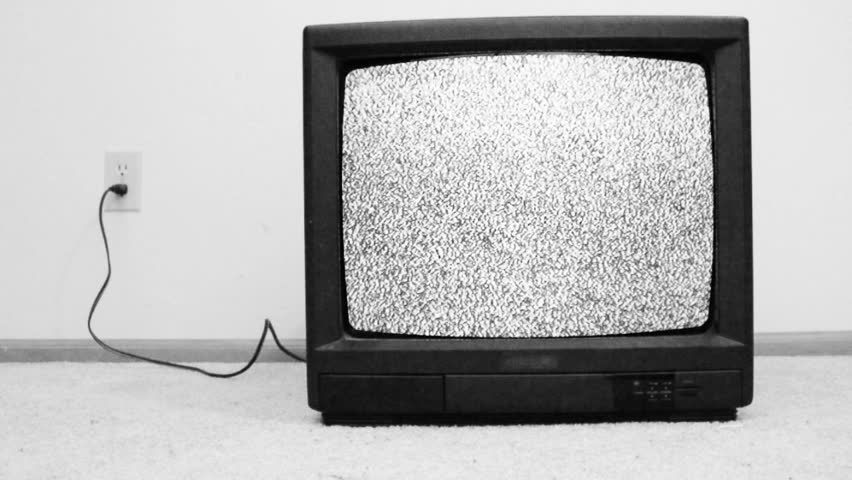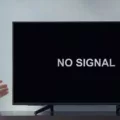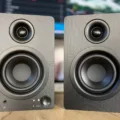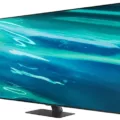Static on your TV screen can be a frustrating experience, especially when you’re trying to watch your favorite show. It can be caused by a variety of factors, including loose cable connections, interference, incorrect input, or a problem with the cable box. In this article, we’ll explore some of the ways you can get rid of static on your TV screen.
One of the easiest ways to eliminate static on your TV screen is to rub a fabric softener sheet over the screen. This will help to eliminate the static buildup that is causing the problem. Alternatively, you can apply liquid fabric softener to a clean cloth and wipe the screen with it. This will also help to eliminate the static.
Another way to reduce static on your TV screen is to place an air humidifier in the room. This will help to cut back on the static in the air that can affect the television.
If you’re experiencing buzzing, humming, or some other variation of unwanted sound on your TV, it’s possible that either CRT scanning, ground loop, or overmodulation is behind the issue. CRT scanning occurs when the scanning frequency of the TV is not synchronized with the power frequency of the electrical system. A ground loop occurs when there is a voltage difference between the ground of the TV and the ground of the cable box. Overmodulation occurs when the signal coming from the cable box is too strong for the TV to handle.
To get rid of these unwanted sounds, you can try moving the cable box to a different location, using a ground loop isolator, or adjusting the volume levels on your TV.
Static on your TV screen can be a frustrating experience, but there are several ways to eliminate it. By rubbing a fabric softener sheet over the screen, using a liquid fabric softener, placing an air humidifier in the room, or addressing the underlying causes of unwanted sounds, you can enjoy a clear and uninterrupted viewing experience.

Getting Rid of Static on a TV Screen
To eliminate static buildup on your TV screen, there are a few methods you can use. Firstly, you can rub a fabric softener sheet gently over the screen to remove the static. Alternatively, you can apply liquid fabric softener to a clean cloth and wipe the screen with it to eliminate the static. It is important to ensure that the cloth is clean and free of any debris that could scratch the screen.
In addition, placing an air humidifier in the room can help to cut back on the static in the air that can affect the television. This is because dry air tends to have more static electricity, and increasing the humidity can reduce this effect.
It is important to note that when cleaning your TV screen, you should avoid using harsh chemicals or abrasive materials, as these can damage the screen. Instead, use gentle, non-abrasive cleaning solutions and soft cloths to wipe the screen clean.
In summary, to get rid of static on your TV screen, you can use fabric softener sheets or liquid, a humidifier, and gentle cleaning methods. By taking these steps, you can reduce static buildup and keep your TV screen looking clear and free of interference.
The Causes of Static on a TV Screen
The static or snowy appearance on your TV screen can be caused by various factors. The most common reason is loose cable connections. If the cables connecting your TV to the cable box or other devices are not securely plugged in, it can result in poor-quality reception and a static image.
Interference is another factor that can cause static on your TV screen. This can be caused by other electronic devices in your home, such as cell phones, microwaves, or even other TVs. These devices can interfere with the signal from the cable box, resulting in a poor-quality picture.
Incorrect input can also cause static on your TV screen. If the input settings on your TV are not correctly configured, it can result in a poor-quality picture or no picture at all.
Lastly, a problem with the cable box can also cause static on your TV screen. If the cable box is not functioning properly, it may not be able to transmit a clear signal to your TV, resulting in a static or snowy image.
To resolve this issue, you can try checking and tightening any loose cable connections, moving electronic devices away from your TV or cable box, adjusting the input settings on your TV, or contacting your cable provider to check the cable box.
Is Television Static Normal?
It is not uncommon for TV sets to emit static or some form of unwanted sound. This issue can occur due to several reasons, including CRT scanning, ground loop, or overmodulation. CRT scanning, which is the process of scanning the electron beam across the screen, can produce a faint buzzing or humming sound. A ground loop occurs when multiple devices are connected to the same electrical system, causing a loop that can create unwanted noise. Overmodulation, which is the process of exceeding the maximum signal level, can cause distortion and static in the audio output. While some level of static or noise is normal for TV sets, excessive or persistent static can indicate a more significant issue that may require professional assistance.
Conclusion
TV screen static can be a frustrating issue that can negatively impact your viewing experience. However, there are several simple solutions to eliminate the static buildup, including using a fabric softener sheet or liquid fabric softener, as well as placing an air humidifier in the room to reduce static in the air. Additionally, a snowy, poor-quality picture can be caused by loose cable connections, interference, incorrect input, or a problem with the cable box. It’s important to troubleshoot and address these issues promptly to enjoy uninterrupted TV viewing. if you’re experiencing buzzing, humming, or other unwanted sounds with your TV, it could be due to CRT scanning, ground loop, or overmodulation, and seeking professional assistance may be necessary. By taking these steps, you can ensure that you can enjoy clear, high-quality TV viewing without the annoyance of static or other issues.








